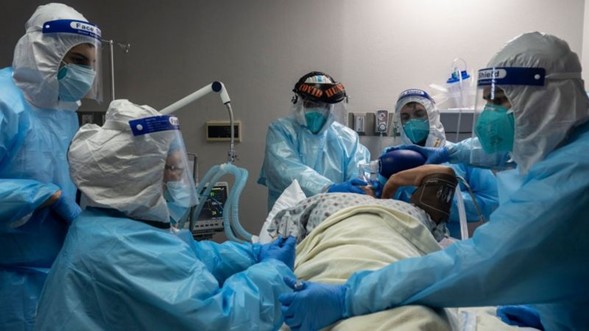
In the period ending July 29, there was a significant increase in hospitalizations related to the COVID-19 virus in the United States. A total of 9,056 people were admitted to hospitals due to this disease, representing a 12% increase compared to the previous week.
Seasonal Recurrence in COVID-19 Hospitalizations
An increase in COVID-19-related hospitalizations is once again being observed in the United States, following a pattern similar to that experienced in the previous three summers. Although this trend could be cause for concern, it is important to note that the number of hospitalized patients is considerably lower compared to previous situations.
Comparison with Previous Peaks of Hospitalizations
It is important to put the current situation into perspective. Although the 12% increase in hospitalizations is evident, it is far from reaching the peaks recorded in the past. For example, in early January, about 44,000 weekly hospitalizations were reported. Similarly, by the end of July 2022, the number was approaching 45,000, and during the surge caused by the ómicron variant in January 2022, around 150,000 hospital admissions were reached.
Expert Opinions and Future Perspectives
Dr. David Dowdy, an infectious disease epidemiologist at the Johns Hopkins Bloomberg School of Public Health, said that while a slight increase is being seen, it’s no cause for alarm. There is a likelihood that infections are also increasing, although available data is limited due to the end of the public health emergency in May.

Wastewater Monitoring and Variants
An increase in the concentration of COVID-19 virus in wastewater across the country has been noted since late June. Health authorities are keeping an eye on these levels, especially as people return from summer trips and students return to school. The highest concentrations are in the northeast and south of the country, which is being closely monitored.
Evolution of Variants and Their Impact
Despite the emergence of a new subvariant, called “eris,” experts do not believe that this mutation makes the virus more dangerous. The scientific community is vigilant against the development of variants, but so far nothing similar to the previous waves generated by the delta or ómicron variants has been observed.
Updated Vaccine Outlook
Updated COVID-19 vaccines, including a version of the ómicron variant called XBB.1.5, are expected to be available in the fall. This represents a major modification to current vaccines, combining the original variant of the coronavirus with previous year’s omicron subvariants.

To finish
Despite ongoing challenges, the upcoming fall and winter season in the United States is expected to be better equipped to deal with the coexistence of COVID-19, influenza, and respiratory syncytial virus. CDC Director Mandy Cohen, M.D., emphasizes that while the situation is complex, there are more tools than ever to address these diseases.
For more articles like this, click here.









